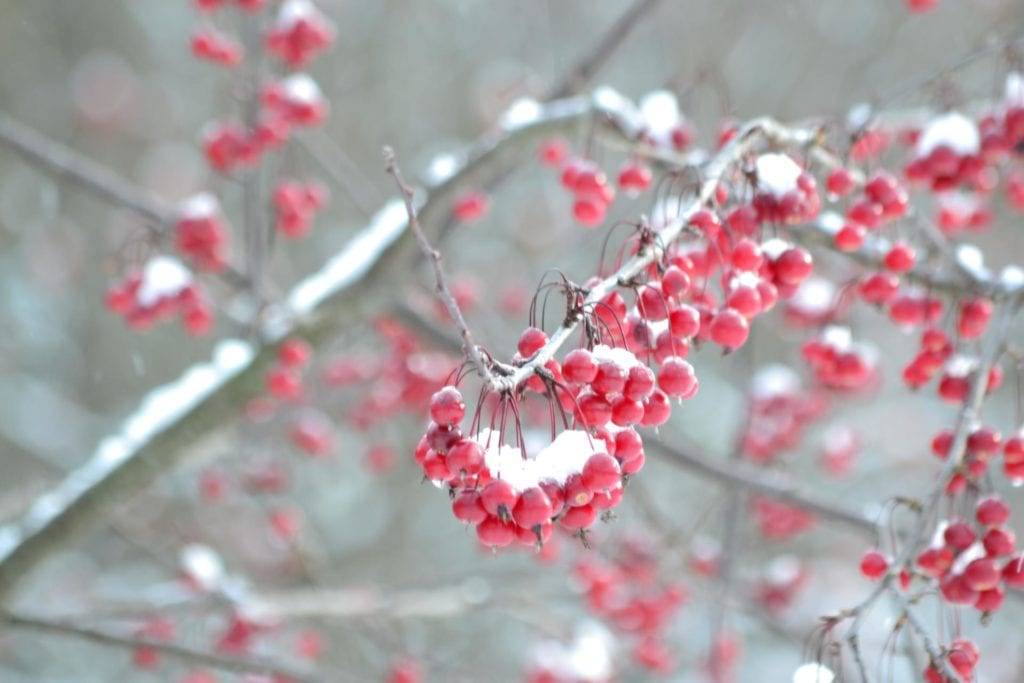After autumn winds strip foliage from deciduous plantings, new colors, shapes, and textures gain prominence in the landscape as berries, bark, and seed heads gain visibility. We ask a few ELA Members which plants they think are stand outs in the winter landscape.
Contributors:
Andi Pettis, Director of Horticulture, The Trust for Governors Island, New York, NY
Sarah Salatino, Owner and Head Grower, Full Circle Gardens, Essex, VT
Chris Sawicki, Sweet Earth Landscapes, Holliswood, NY
Which are your favorite plants for winter interest and what are their characteristics?
Andi: Carex bromoides is a mid-western native, brome-like sedge that creates a deep green hillock, about a foot tall and eighteen inches wide. In fall and winter the foliage fades out to a warm gold cushion.
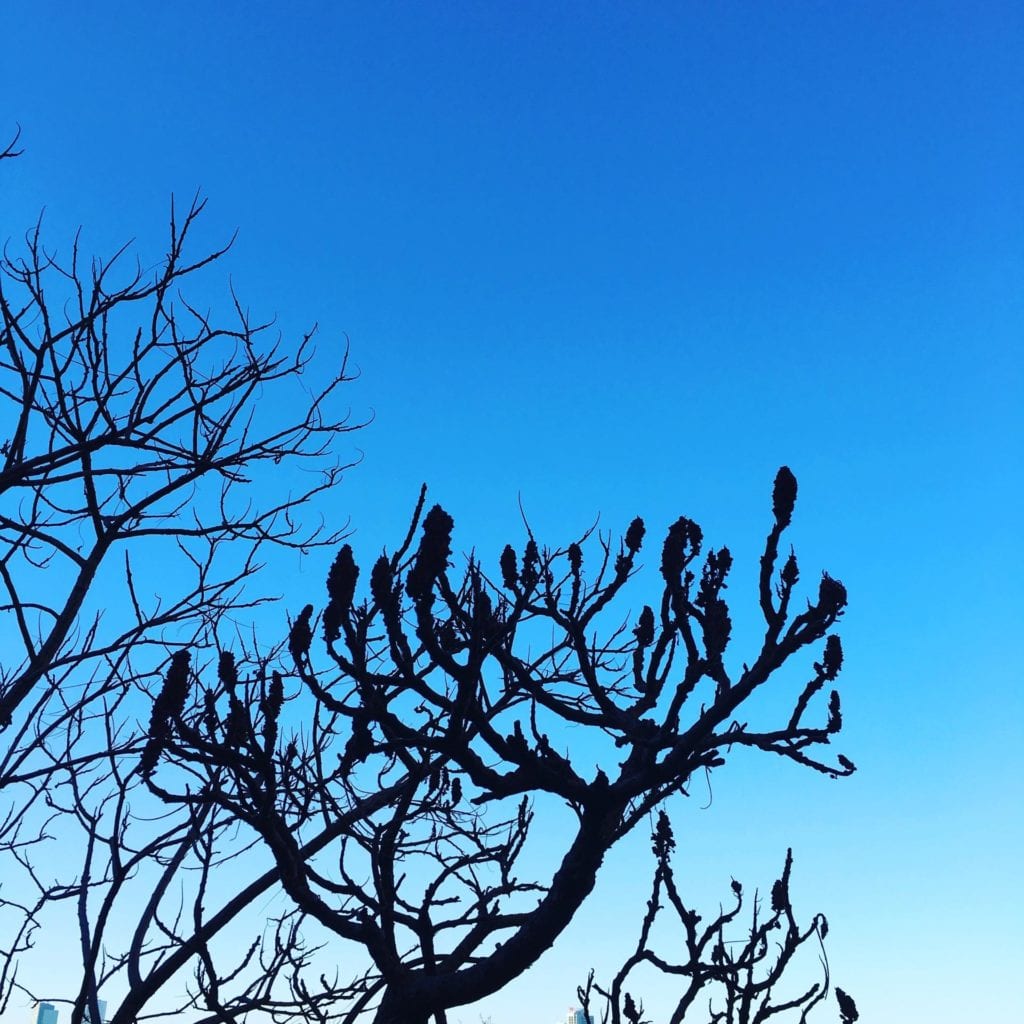 The elegant, bare branches of sumac (Rhus spp.) silhouetted against a clear winter sky is breathtaking. The fuzzy garnet colored fruit clusters of Rhus typhina persist through the winter, providing rich color and emergency winter food for many species of birds.
The elegant, bare branches of sumac (Rhus spp.) silhouetted against a clear winter sky is breathtaking. The fuzzy garnet colored fruit clusters of Rhus typhina persist through the winter, providing rich color and emergency winter food for many species of birds.
Vernonia glauca or broadleaf ironweed has tall, dark, sturdy stems that make the bright gold seed fluff at the tips pop. I love it dotted through a meadow planting, especially when the sun is low in the sky and the fluff seems to glow.
Sarah: I really like native echinaceas and rudbeckias wearing their snow hats for winter. The goldfinches here really appreciate the uncut flower heads for the seed.
Winterberries are another favorite because it’s so much red accent in a garden filled with brown, green, and white. It’s especially beautiful when a male cardinal lands on the branches, always when I am without my camera. Years ago, I planted several winterberry shrubs at Full Circle Gardens for holiday decorations and to share with local wildlife. The wildlife seems glad that most years I never get around to holiday crafts.
Finally, grasses with snow on their florets or still showing their fall colors like Schizachyrium scoparium, are stunning on a snowy landscape or are bright when there’s no snow. Bouteloua gracilis, with its horizontally held florets, are like sculptures.
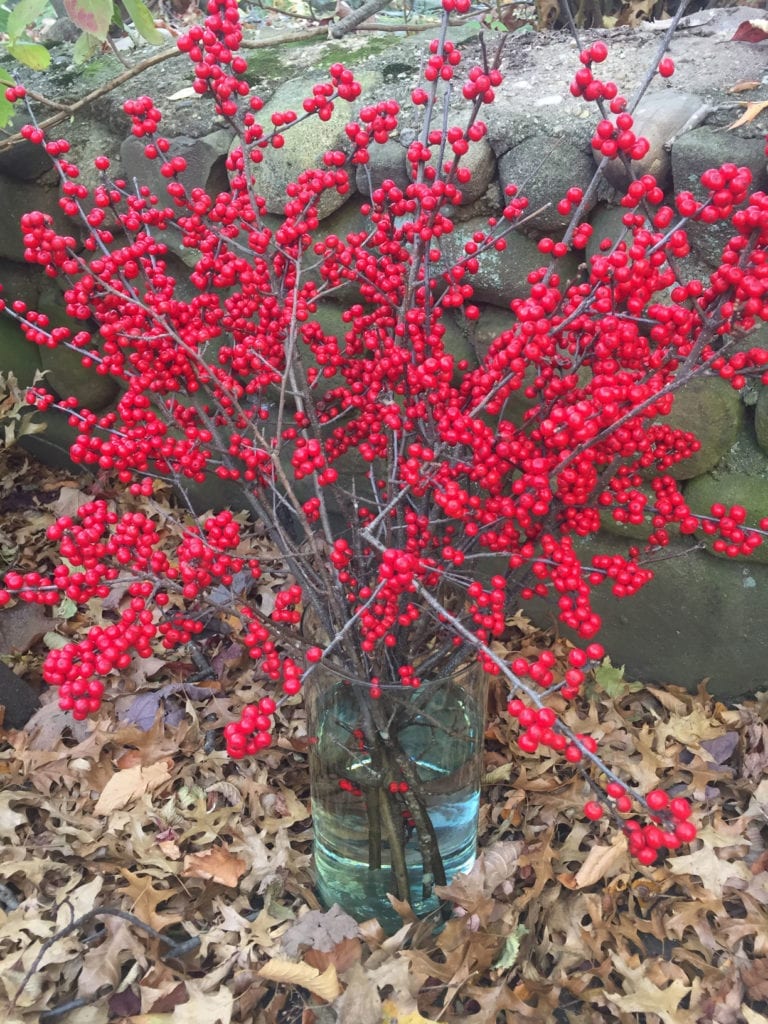 Chris: At this time of year, the plant that takes my breath away is Ilex verticillata, especially when glimpsed growing wild by the side of the road. Unremarkable in leaf, it seems to magically appear when the leaves have fallen and the glowing red berries catch one’s eye – bringing pleasure in a garden but perhaps even more so in unexpected locations. It thrives in wet areas where other shrubs don’t succeed and provides a welcome source of food for birds and beauty for humans. Winterberry is a reminder to enjoy the moment because few of the berries will remain throughout the winter, but at the beginning of a long gray season it lifts my spirits.
Chris: At this time of year, the plant that takes my breath away is Ilex verticillata, especially when glimpsed growing wild by the side of the road. Unremarkable in leaf, it seems to magically appear when the leaves have fallen and the glowing red berries catch one’s eye – bringing pleasure in a garden but perhaps even more so in unexpected locations. It thrives in wet areas where other shrubs don’t succeed and provides a welcome source of food for birds and beauty for humans. Winterberry is a reminder to enjoy the moment because few of the berries will remain throughout the winter, but at the beginning of a long gray season it lifts my spirits.
Which plants are in your favorite winter plant grouping or groupings? Explain the appeal of the particular grouping.
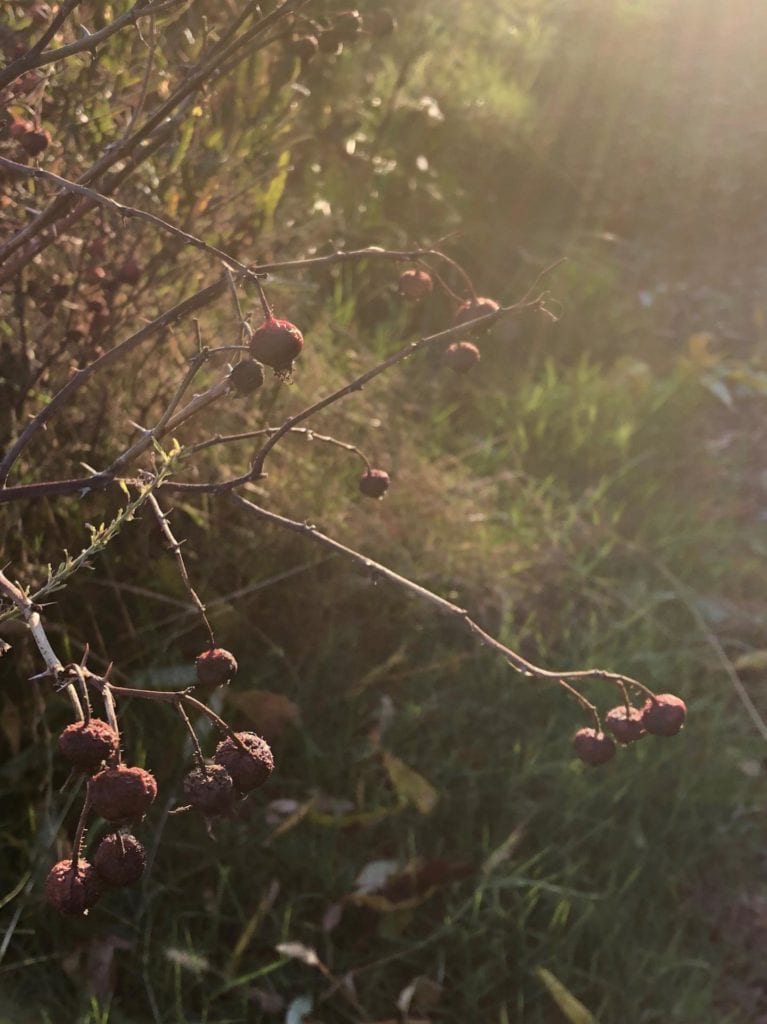 Andi: Rosa carolina growing among native companion grasses such as switchgrass is one of my favorite scenes, whether planted or occurring on it’s in an abandoned field. The dark canes and hips stand out against the airy seed heads and bleached out foliage.
Andi: Rosa carolina growing among native companion grasses such as switchgrass is one of my favorite scenes, whether planted or occurring on it’s in an abandoned field. The dark canes and hips stand out against the airy seed heads and bleached out foliage.
Another favorite is Carex bromoides, again, planted under well-branched woodland edge shrubs such as viburnum lentago or aeschelus parviflora. The golden mounds of the sedge create an undulating woodland floor, and the branching shrubs draw your eye up from the ground. The sedge and duff from other plants provide cover for ground dwelling solitary bees, too.

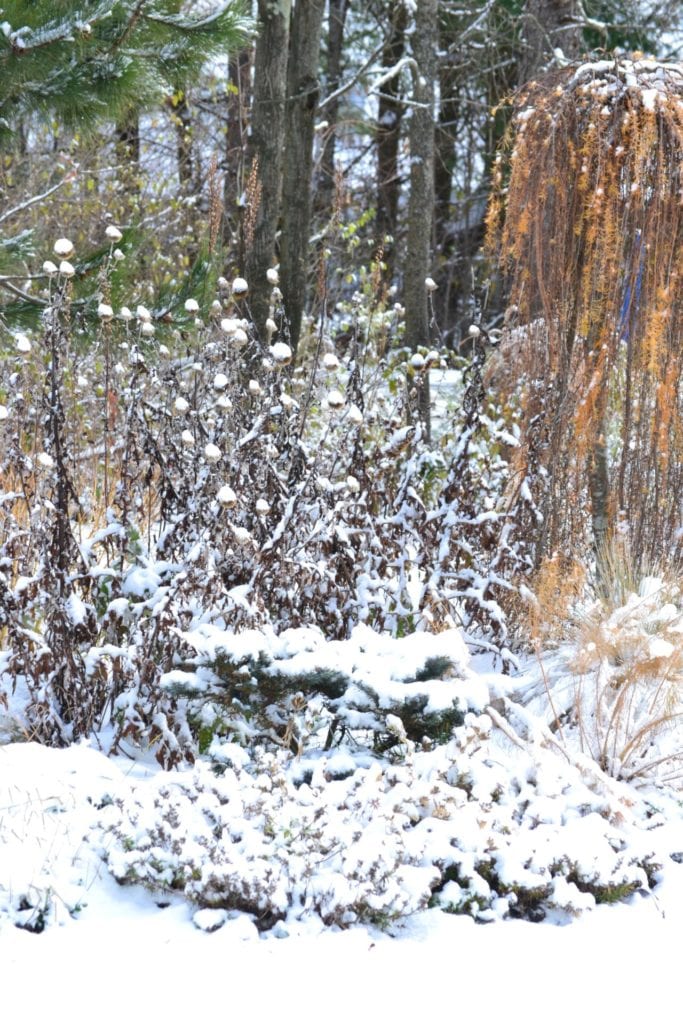 Sarah: Honestly, I’m pretty boring. I find our mono grouping of mature staghorn sumac with their red flowers on top beautiful. The “rainbow garden” in the photo at left with the weeping larch is a combo of textures that persists into spring. Hydrangeas, even though they are non-native, are stunning when their flowers are left on and they have snow hats. Who can resist a stand of the classic red osier dogwood on a drab winter day? I am grateful to live in an area where nature has made perfect winter plant groupings.
Sarah: Honestly, I’m pretty boring. I find our mono grouping of mature staghorn sumac with their red flowers on top beautiful. The “rainbow garden” in the photo at left with the weeping larch is a combo of textures that persists into spring. Hydrangeas, even though they are non-native, are stunning when their flowers are left on and they have snow hats. Who can resist a stand of the classic red osier dogwood on a drab winter day? I am grateful to live in an area where nature has made perfect winter plant groupings.
***
Each author appearing herein retains original copyright. Right to reproduce or disseminate all material herein, including to Columbia University Library’s CAUSEWAY Project, is otherwise reserved by ELA. Please contact ELA for permission to reprint.
Mention of products is not intended to constitute endorsement. Opinions expressed in this newsletter article do not necessarily represent those of ELA’s directors, staff, or members.

